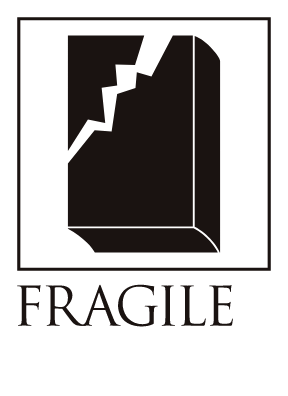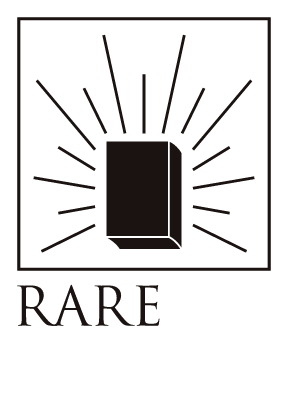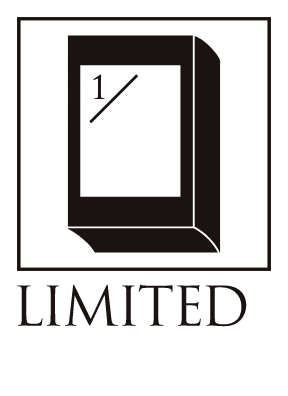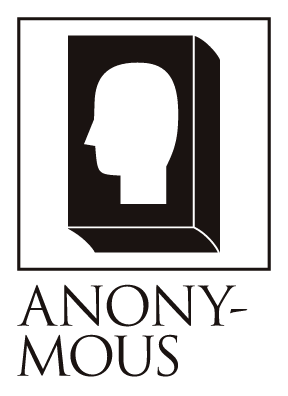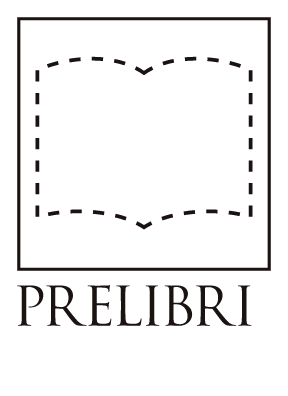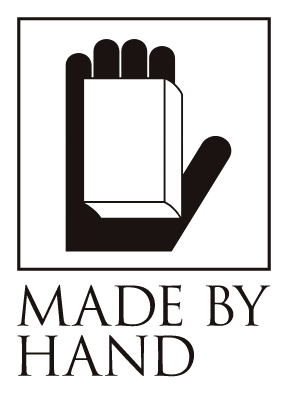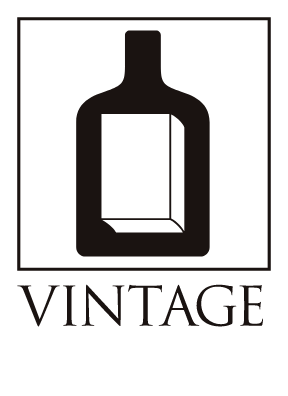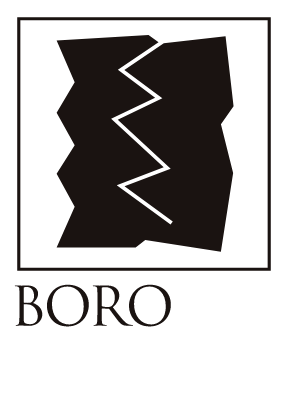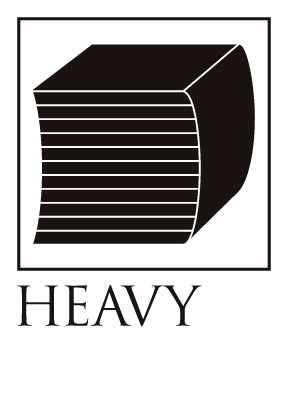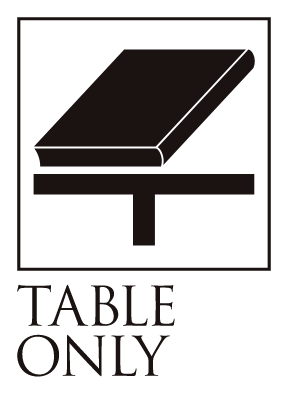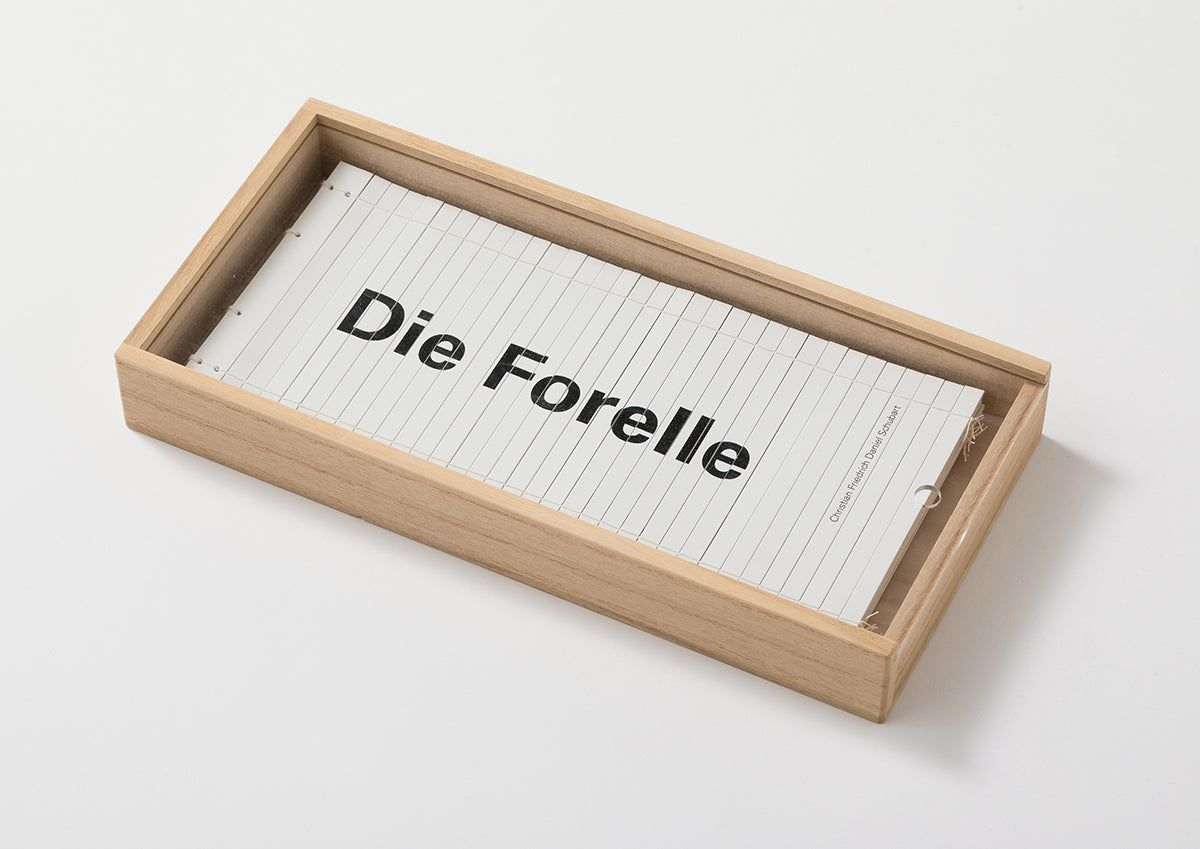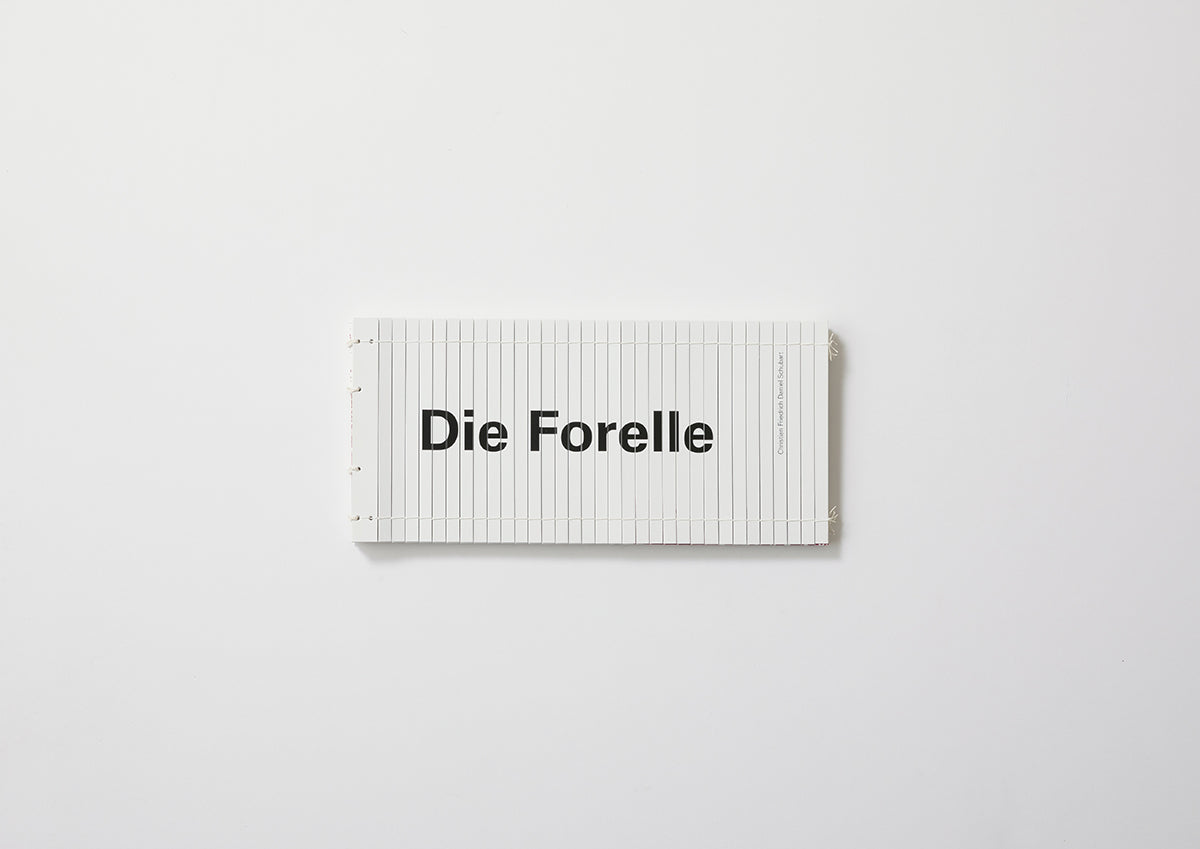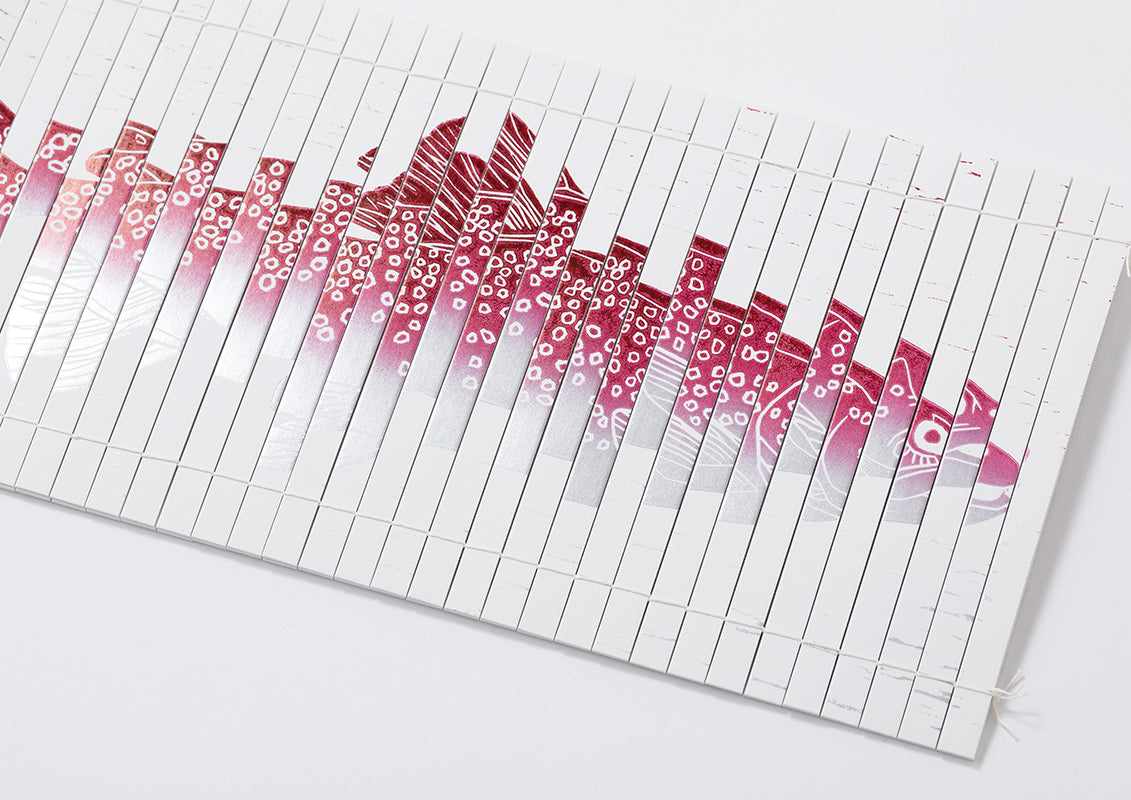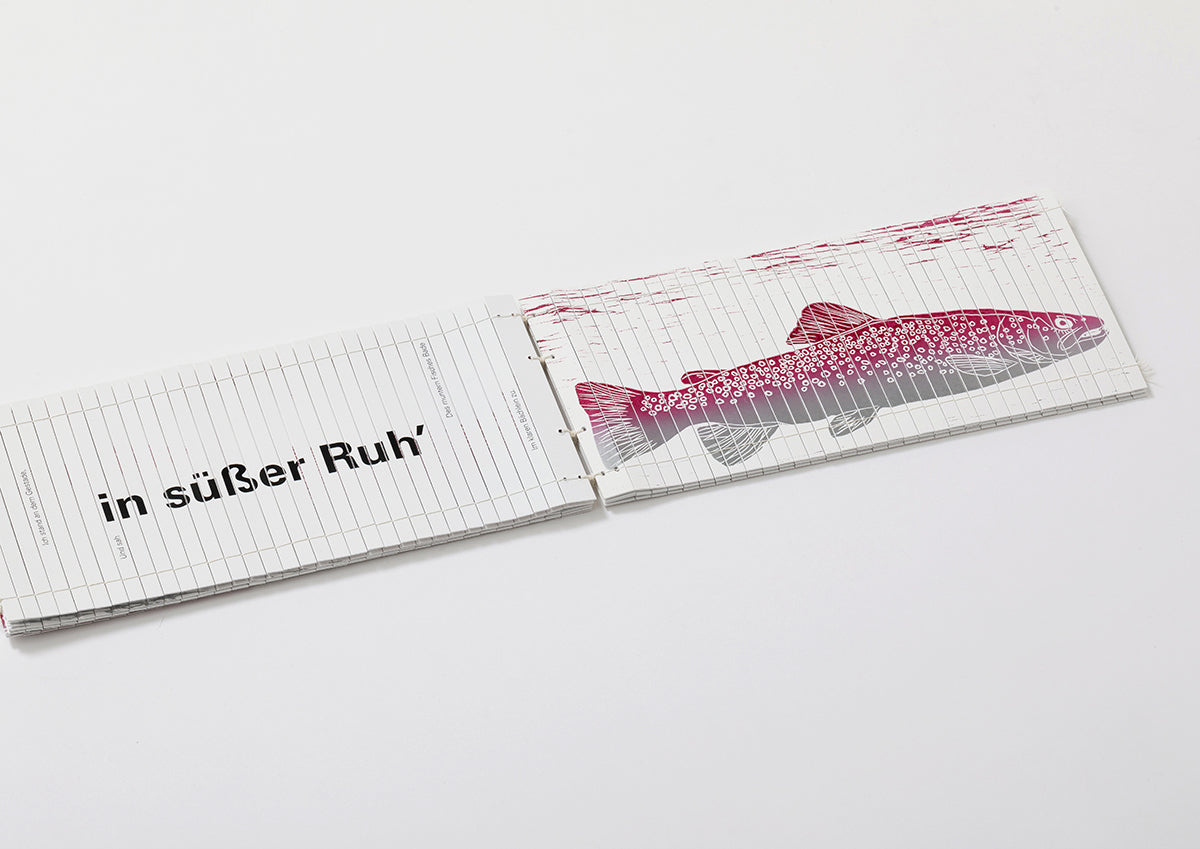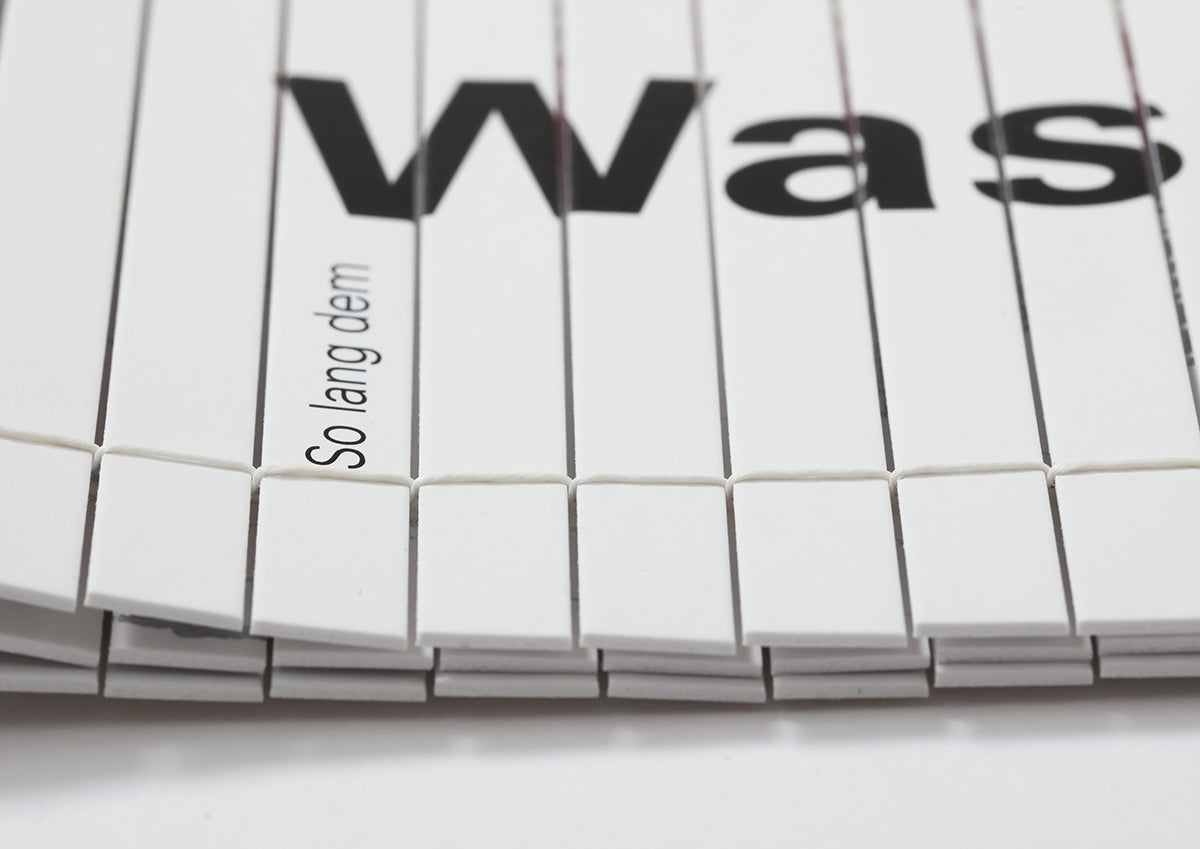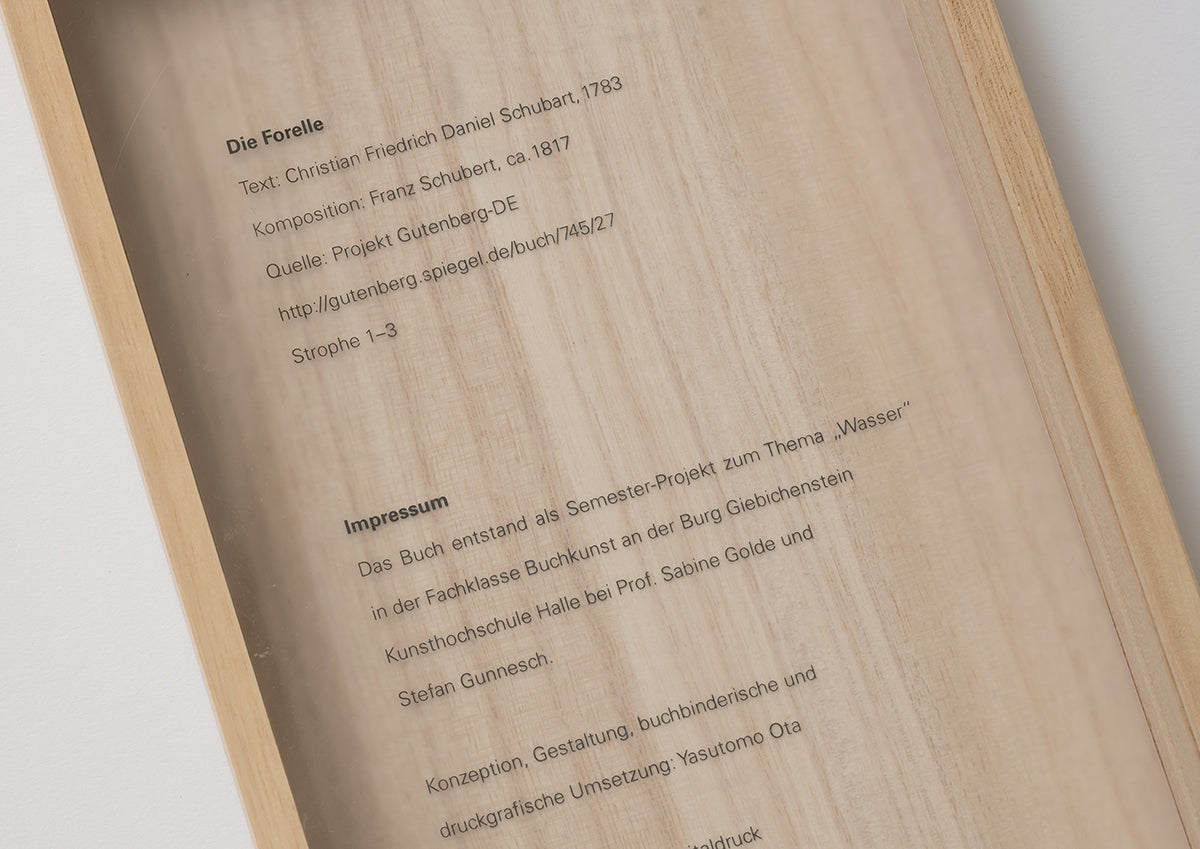Die Forelle
Bibliographic Details
- Title
- Die Forelle
- Artist
- Yasutomo Ota / 太田泰友
- Year
- 2014
- Size
- h158 × w338 × d42mm
- Weight
- 1.3kg
- Language
- ドイツ語/German
- Printing
- リノリウム版画、デジタル印刷
- Materials
- 厚紙、麻糸
- Edition
- 10
- Condition
- new
What if books were water?
"The Forelle"
2014
This masterpiece by Yasutomo Ota was born from the concept of "water." It is based on the lyrics of the popular song "Die Forelle" (1817) by Franz Peter Schubert (January 31, 1797 - November 19, 1828).
If you hold the bound spine and shake it from side to side, the whole book sways supplely like rippling waves, as if a trout might jump out with the water at any moment. On the white pages, which are modeled after bamboo strips, vivid trout are depicted in linoleum prints that sparkle with each turn of the page, and the lyrics written by Schubart (Christian Friedrich Daniel Schubart, March 24, 1739 - October 10, 1791) are scattered throughout the work in German.
The artist chose structure as a method of expression for "Water." Using both the bamboo strips used in ancient China and Coptic binding, reminiscent of the traditional Western book shape, he has succeeded in creating a unique structure that has never been seen before. By gluing three sheets of paper together, he has achieved a finish that is as strong as bamboo, yet lighter and more flexible than bamboo, and by deliberately binding the bamboo strips, which are normally stored in a scroll shape, he has created a completely new form of book. By binding one end, an axis is created, allowing the book to stand stably on its own, so the angle of each page can be freely changed, allowing you to enjoy the beauty of its shape.
The most distinctive feature of the production process of "Die Forelle" is the structure of a single bamboo strip. To guarantee the strength of a single page and to solve problems in the printing process, it was necessary to glue three pieces of paper together. In the printing process, even a deviation of just 1mm from the center of an 8mm-wide strip can have a major impact. In particular, for pages with text, the small letters must be aligned with the center of the strip, and there is no other way to do this than to print each side and then glue them together with one another by hand and eye.
Traditionally, bamboo strips are written in a vertical direction, as is typical of China and Japan. In this work, we go against this norm and use the lyrics of Schubart's "The Trout," written in German, in a horizontal format. As a result, the mutual progression of structure and content literally plays and intersects, opening up possibilities for new approaches to books and typography.
The intersection of structure and content in this work makes us think about the direction of text progression, and by placing horizontal German text on a vertical format, we are strongly conscious of the direction of text progression. The lyrics of "Trout" basically progress from bottom to top on the bamboo strip, and the inner pages progress from left to right. This directionality is due to the fact that when titles are printed vertically on the spine of a German book, they are generally arranged to be read from bottom to top.
This work is one of the most outstanding examples of the artist's distinctive way of capturing the physicality of the book, and it gives a glimpse of the delicate sensibilities and precise technical skills of Japan.
